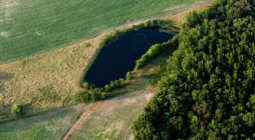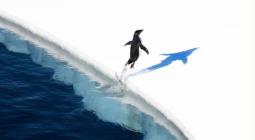Antarctica has lost 7.5tn tonnes of ice since 1997, scientists find

Study finds more than 40% of ice shelves have shrunk, with millions of tonnes of freshwater entering ocean
More than 40% of Antarctica’s ice shelves have shrunk since 1997 with almost half showing “no sign of recovery”, a study has found, linking the change to the climate breakdown.
Scientists at the University of Leeds have calculated that 67tn tonnes of ice was lost in the west while 59tn tonnes was added to the east between 1997 and 2021, resulting in a net loss of 7.5tn tonnes.
Warm water on the western side of Antarctica has been melting ice, whereas in the east, ice shelves have either stayed the same or grown as the water is colder there.
The ice shelves sit at the end of glaciers and slow their rate of flow into the sea. When they shrink, glaciers release larger amounts of freshwater into the sea which can disrupt the currents of the Southern Ocean.
Dr Benjamin Davison, an expert in Earth observation and the study’s lead, said: “There is a mixed picture of ice-shelf deterioration, and this is to do with the ocean temperature and ocean currents around Antarctica.
“The western half is exposed to warm water, which can rapidly erode the ice shelves from below, whereas much of east Antarctica is currently protected from nearby warm water by a band of cold water at the coast.”
Scientists measured year-by-year changes to the ice using satellites that can see through the thick cloud during long polar nights.
Researchers looked at more than 100,000 images taken from space to analyse the health of the ice shelves, which can have knock-on effects for the rest of the globe, and published their findings in the journal Scientific Advances.
The estimated 67tn tonnes of freshwater released into the ocean over the 25-year period affects the ocean currents that transport heat and nutrients around the world.
Scientists believe the ice loss is a result of the climate crisis because there would be more ice regrowing if it was part of a cycle of natural variation.
Davison said: “We expected most ice shelves to go through cycles of rapid, but short-lived shrinking, then to regrow slowly. Instead, we see that almost half of them are shrinking with no sign of recovery.”
Last month, a study found that Antarctica was likely to be warming at almost twice the rate of the rest of the world and faster than climate crisis models are predicting.
Scientists in France analysed 78 Antarctic ice cores to recreate temperatures going back 1,000 years and found the warming across the continent was outside what could be expected from natural swings.
Photograph: Anadolu Agency/Getty Images - Melting icebergs on Horseshoe Island. Warm water on the western side of Antarctica has been melting ice, whereas in the east the water is colder.





